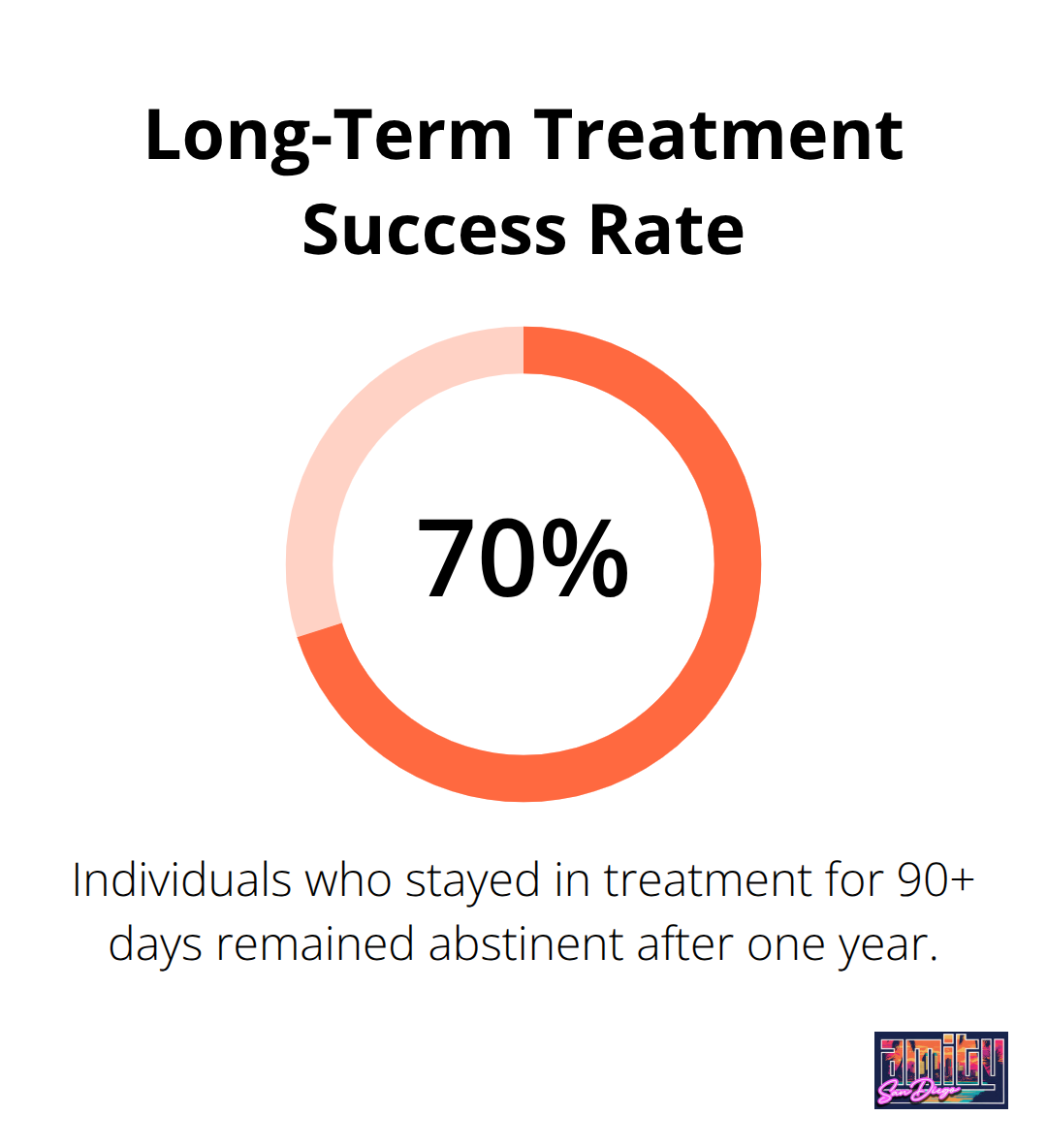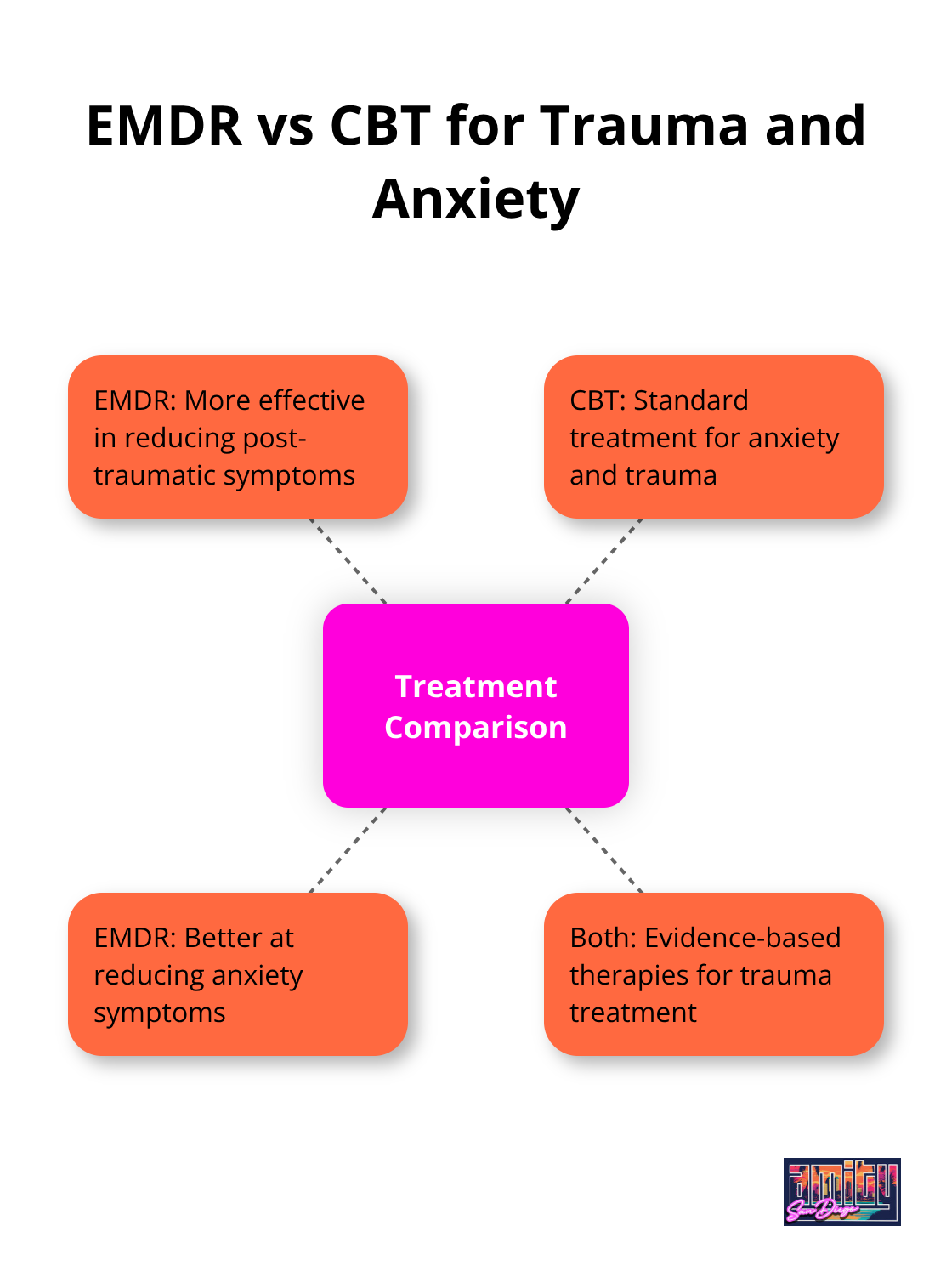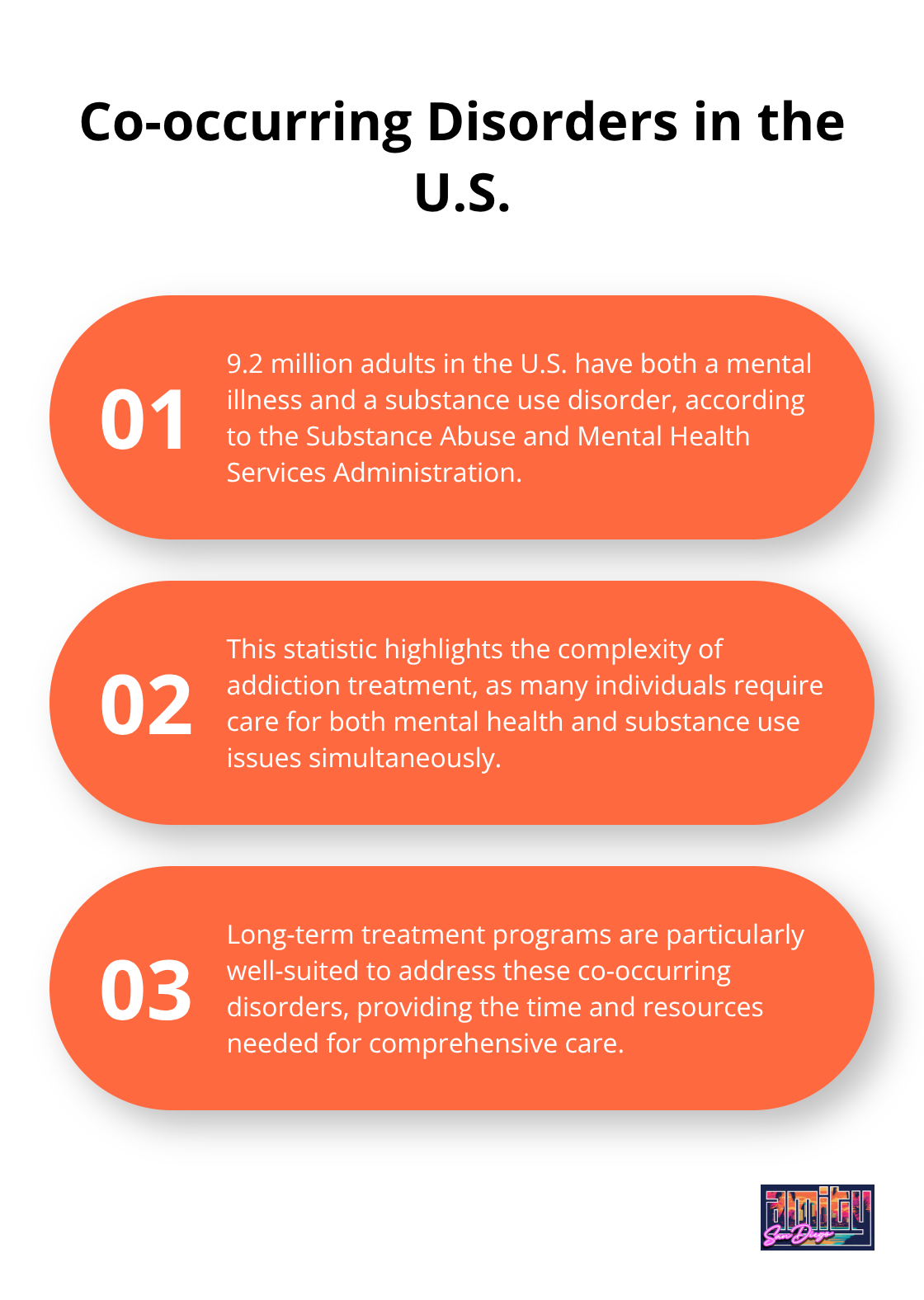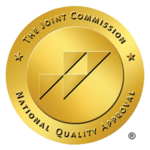At Amity San Diego, we’ve seen firsthand the transformative power of long-term treatment programs for addiction recovery.
While quick fixes may seem appealing, lasting change often requires a more comprehensive approach. Long-term treatment offers individuals the time and support needed to address the root causes of addiction and develop sustainable coping strategies.
In this post, we’ll explore the benefits of extended care and why it’s a game-changer for those seeking lasting recovery.
Why Long-Term Treatment Matters
Defining Long-Term Addiction Treatment
At Amity San Diego, we consider long-term treatment as a comprehensive program that lasts 90 days or more. This extended approach allows for deeper healing and sustainable change in the recovery process.
The Shortcomings of Brief Interventions
Short-term programs (typically 30 days or less) often fail to address the complex nature of addiction. While they can serve as a starting point, these brief interventions rarely provide enough time to break entrenched habits and develop new coping mechanisms. The National Institute on Drug Abuse (NIDA) reports that short-term treatments show limited effectiveness for most individuals struggling with substance use disorders.
Advantages of Extended Care
Long-term treatment offers a more thorough approach to recovery. It provides the time and space needed to:
- Complete detoxification from substances
- Address underlying mental health issues
- Learn and practice new coping skills
- Rebuild relationships and support systems
- Create a solid aftercare plan
Success Rates Support Long-Term Care
The effectiveness of long-term treatment is evident in the numbers. Addiction treatment can be effective, and assessing a program’s efficacy is crucial when considering options for recovery.
The Substance Abuse and Mental Health Services Administration (SAMHSA) provides another compelling statistic. They found that individuals who stayed in treatment for 90 days or more had significantly better outcomes, with abstinence rates as high as 70% one year after treatment.

Personalized Care for Lasting Change
Long-term treatment allows for a more individualized approach. Treatment teams can adjust plans as clients progress, addressing new challenges as they arise. This flexibility proves essential for dealing with co-occurring disorders and preventing relapse.
The goal of long-term treatment extends beyond maintaining sobriety during the program. It focuses on building a foundation for lifelong recovery. Individuals who invest in extended care give themselves the best possible chance at reclaiming their lives from addiction.
As we explore the key components of effective long-term treatment in the next section, you’ll see how these elements work together to create a comprehensive recovery experience.
What Makes Long-Term Treatment Effective?
At Amity San Diego, we have identified key elements that contribute to successful long-term addiction treatment. Our approach combines evidence-based practices with personalized care to address the complex nature of substance use disorders.
Comprehensive Assessment and Individualized Planning
The foundation of effective long-term treatment lies in thorough initial assessments. We conduct in-depth medical and psychological evaluations to understand each client’s unique needs. This process allows us to create tailored treatment plans that evolve as clients progress through recovery.
Personalized addiction treatment plans consider your unique history, challenges, and goals to create an approach that truly works for you.
Evidence-Based Therapy Modalities
Our treatment programs incorporate a variety of therapy modalities proven effective in addiction recovery:
- Cognitive Behavioral Therapy (CBT) helps clients identify and change negative thought patterns.
- Dialectical Behavior Therapy (DBT) teaches skills for emotional regulation and interpersonal effectiveness.
- Eye Movement Desensitization and Reprocessing (EMDR) addresses trauma that often underlies substance use.
Research suggests that EMDR is better than CBT in reducing post-traumatic symptoms and anxiety.

Holistic Approaches for Whole-Person Healing
Long-term recovery involves more than just abstaining from substances. We integrate holistic approaches that support overall well-being:
- Nutritional counseling helps repair the physical damage of addiction.
- Regular exercise promotes mental health and reduces stress.
- Mindfulness practices (like meditation) foster emotional regulation and self-awareness.
Nutrition counseling influences physical repair, emotional stability, and mental clarity, providing a foundation for lasting sobriety.
Comprehensive Aftercare Planning
The transition from treatment back to daily life is a critical period in recovery. Our aftercare planning begins early in the treatment process. We work with clients to develop robust support systems, identify potential triggers, and create strategies for maintaining sobriety.
The Role of Family and Community Support
Family involvement plays a vital role in long-term recovery success. We offer family therapy sessions and education programs to help loved ones understand addiction and support the recovery process. Community integration, including participation in support groups and sober activities, also strengthens the foundation for lasting change.
As we explore the specific benefits of long-term addiction treatment in the next section, you’ll see how these components work together to create a comprehensive and effective recovery experience.
Why Long-Term Treatment Works
Time: The Essential Ingredient
Recovery requires more than a quick fix. The National Institute on Drug Abuse states that most individuals need at least 90 days of treatment to significantly reduce or stop drug use. Extended care allows clients to:
- Complete physical detoxification
- Address deep-rooted emotional issues
- Practice new coping skills in a safe environment
- Rebuild damaged relationships
- Create a solid foundation for long-term recovery
Tackling Co-Occurring Disorders
Long-term treatment provides the opportunity to effectively address co-occurring disorders. The Substance Abuse and Mental Health Services Administration estimates that about 9.2 million adults in the U.S. have both a mental illness and a substance use disorder. Extended programs allow for proper diagnosis and treatment of these complex cases.

Real-World Skill Development
In long-term treatment, clients don’t just learn about recovery; they live it. They develop and practice strategies for real-world challenges, including:
- Stress management techniques
- Healthy communication skills
- Relapse prevention planning
- Financial management
- Career development
A study in the Journal of Substance Abuse Treatment found that patients who received skills training were less likely to relapse compared to those who didn’t.
The Strength of Community
Extended treatment allows clients to build strong, supportive relationships with peers and staff. These connections often become lifelines in early recovery. The National Institute on Drug Abuse emphasizes the importance of social support in maintaining long-term sobriety.
Treatment centers foster this community through:
- Group therapy sessions
- Peer support programs
- Family involvement in treatment
- Alumni networks and events
Gradual Transition to Daily Life
Long-term treatment provides a supported transition back to everyday life. This step-down approach significantly reduces the shock of leaving a structured environment and facing real-world triggers.
Clients typically progress through levels of care:
- Residential treatment (if needed)
- Partial hospitalization program (PHP)
- Intensive outpatient program (IOP)
- Outpatient care
- Aftercare and alumni support
This gradual transition allows for ongoing support and adjustment of treatment plans as needed. A study in the Journal of Psychoactive Drugs found that this continuum of care approach led to better outcomes and lower relapse rates compared to standalone treatments.
Final Thoughts
Long-term treatment programs offer a comprehensive approach to addiction recovery. These programs provide the time needed to address underlying issues, develop coping skills, and create a strong foundation for recovery. Personalized care, evidence-based therapies, and a supportive community significantly increase the chances of long-term success.
Recovery requires patience, dedication, and ongoing support. Long-term treatment provides the structure and guidance needed to navigate the challenges of early sobriety and beyond. Professional help can make a significant difference in the recovery journey.
We at Amity San Diego offer high-quality, evidence-based treatment in a compassionate environment. Our team of experts stands ready to guide you through every step of your recovery journey. Take the first step towards lasting recovery today by contacting Amity San Diego for more information.



